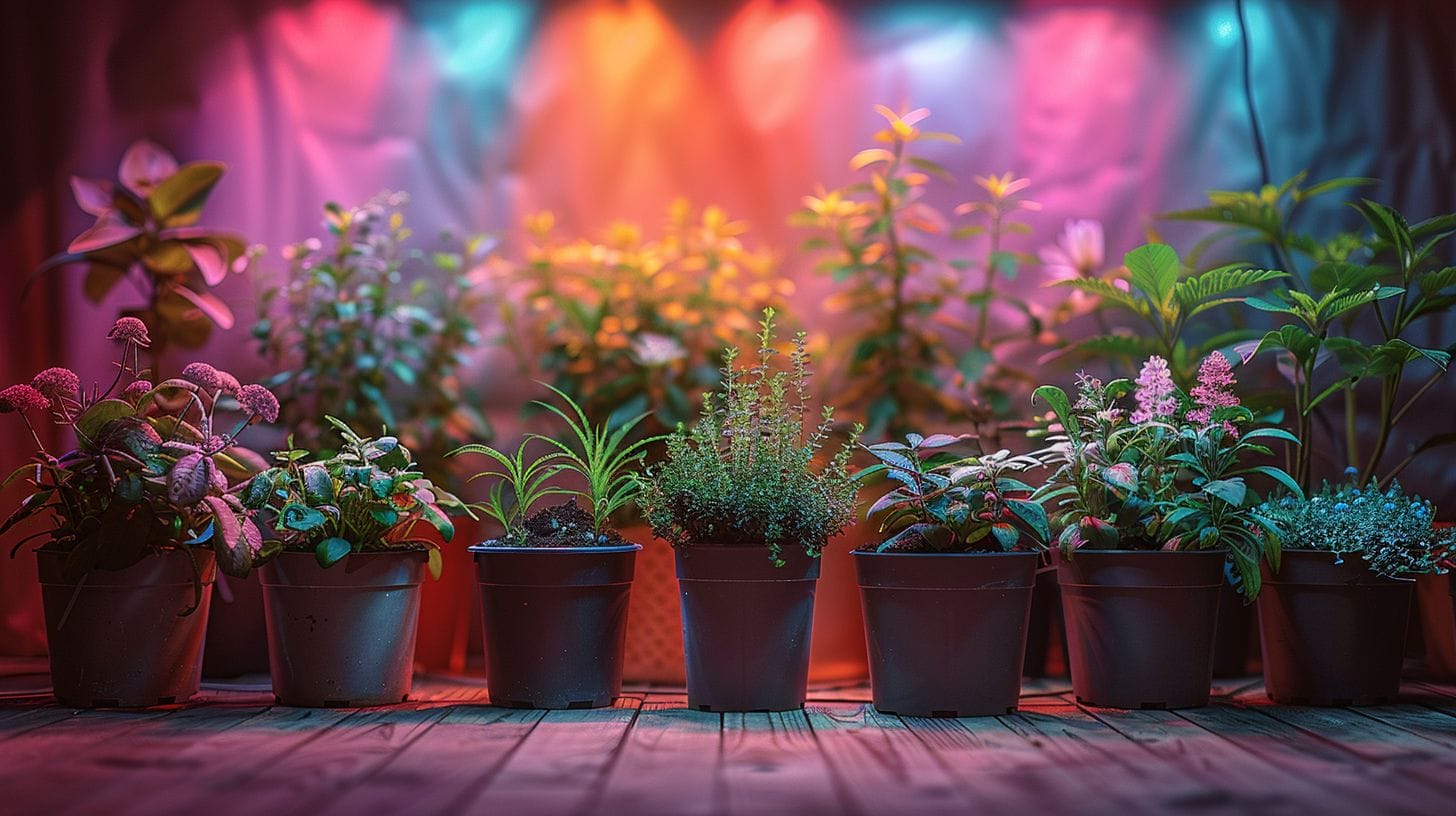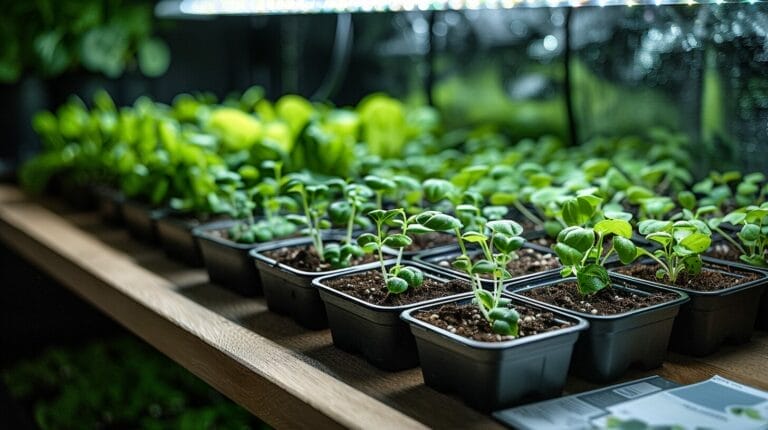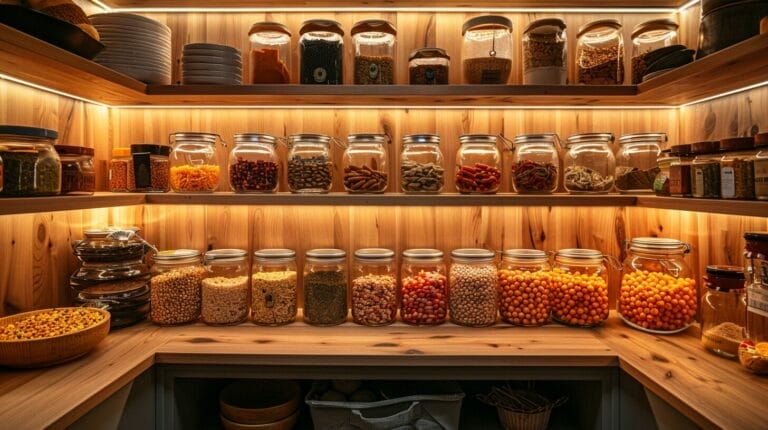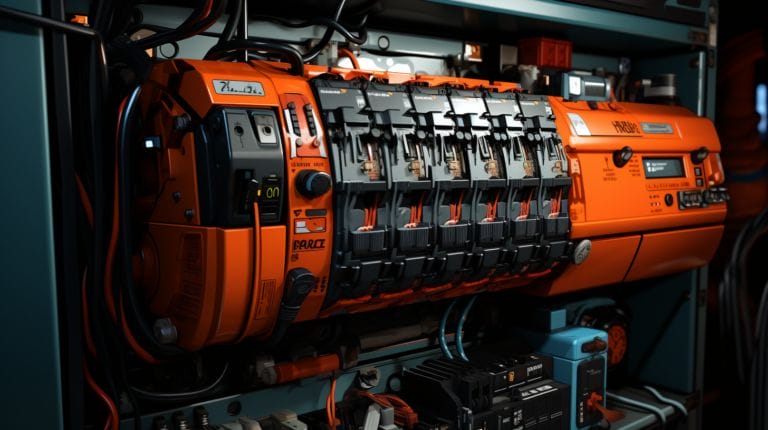Full Spectrum LED Grow Light Distance Chart: Complete Guide
As indoor plant enthusiasts, we all know that getting the perfect distance for our full spectrum LED grow lights can make or break our plant’s growth. But what if I told you that mastering this distance is the key to unlocking your plants’ full potential?
Understanding the intricacies of the full spectrum LED grow light distance chart is crucial for ensuring your plants thrive under artificial light, especially when adjusting for the plant canopy.
So, how can you ensure your plants receive the optimal light they need to flourish?
Key Takeaways
- Optimal light distance is crucial for plant growth and development.
- Understanding full spectrum capabilities is essential for proper lighting.
- Adjusting distance based on growth stages and wattage ensures optimal results for your indoor grow.
- Monitoring and adjusting light distance regularly promote healthy photosynthesis.
Understanding the Importance of Correct LED Grow Light Distance for Indoor Plants
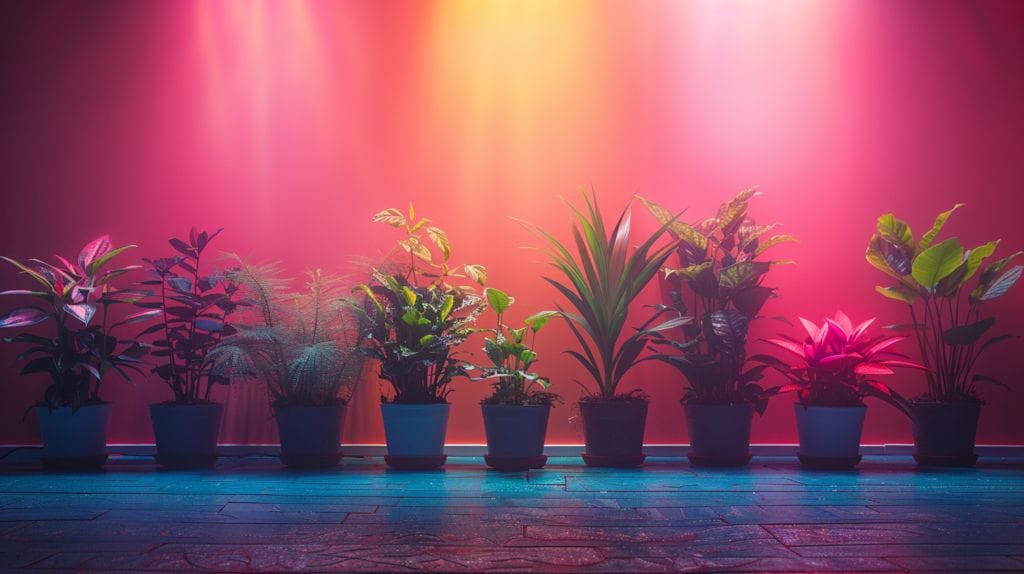
In the realm of indoor gardening, understanding the optimal LED grow light distance is crucial. The light distance from your plants plays a significant role in providing the right light intensity per square inch for photosynthesis.
Maintaining the correct distance between your LED grow lights and plants is key to achieving adequate light intensity. Lights placed too far may result in lower leaves receiving insufficient light, leading to stunted growth and poor plant health. This highlights the importance of positioning for optimal light distribution per square inch. Conversely, lights positioned too close can cause light burn, damaging the leaves and hindering photosynthesis.
Understanding the light spectrum needed by your plants is crucial when determining the optimal LED grow light distance. By positioning your full-spectrum LED grow lights at the right distance, you ensure your plants receive the necessary red, blue, and sometimes green light for robust growth and flourishing health.
Navigating the Full Spectrum LED Grow Light Distance Chart
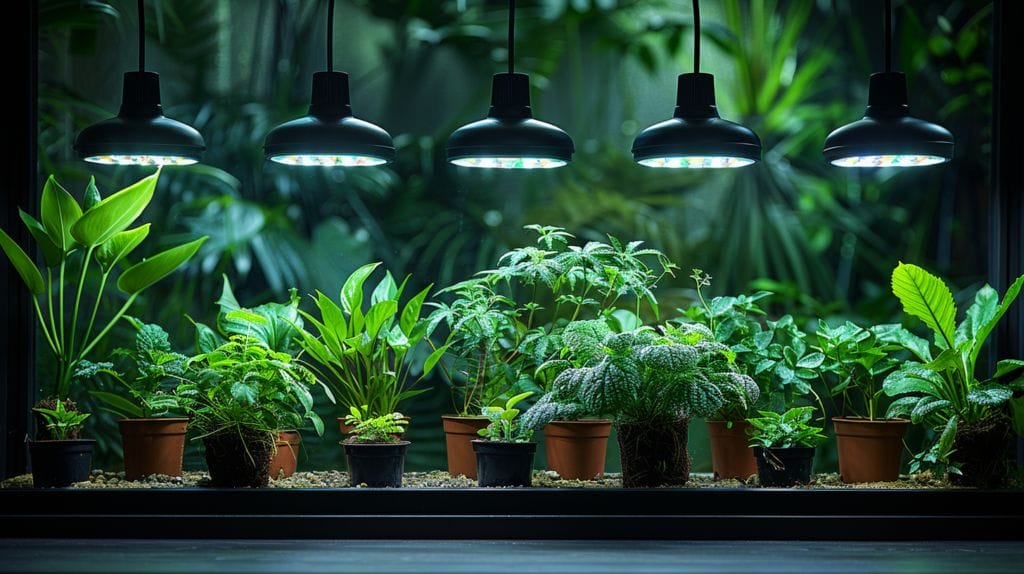
Understanding the full spectrum capabilities of your LED grow lights is crucial for effective plant growth. Different growth stages require varying light intensities, which can be achieved by adjusting the distance between the light and the plants.
Wattage is another important factor to consider when consulting the distance chart. Higher wattage lights, such as 600w, generally emit more intense light, which can affect the recommended distance for optimal growth. By following the guidelines provided in the distance chart, you can ensure that your plants receive the right amount of light at each stage of their development, leading to healthier and more productive growth.
Comparing Types of Grow Lights: Full Spectrum LEDs and Others
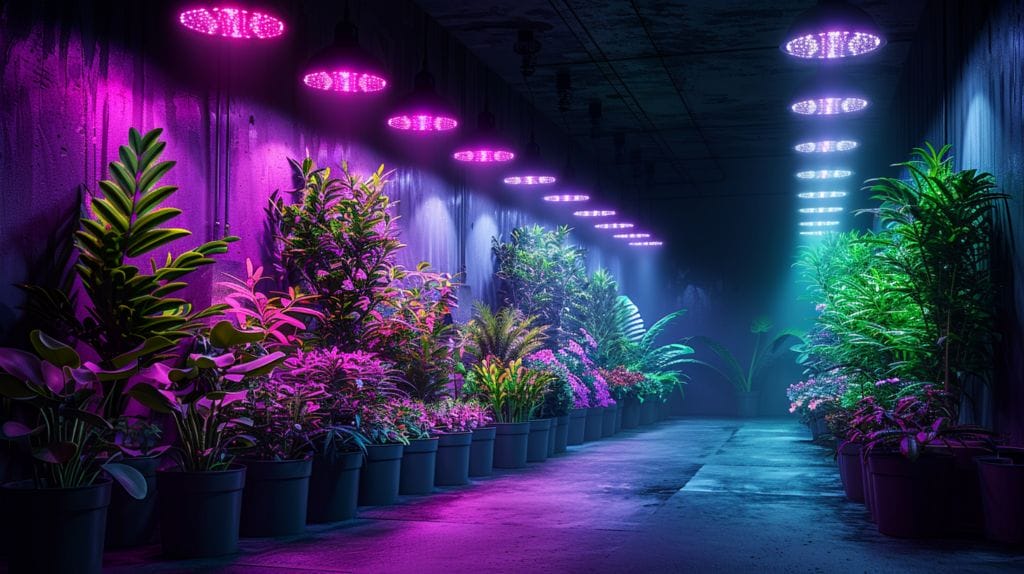
Understanding the differences between full spectrum LEDs and other types of grow lights is essential for making informed decisions about indoor plant lighting. Full-spectrum LED grow lights have gained popularity due to their ability to provide a light spectrum similar to natural sunlight, crucial for all stages of the plants’ life cycle.
When compared to other light types, such as fluorescent or high-pressure sodium lights, the efficiency and light placement advantages of full-spectrum LEDs become evident. Full-spectrum LEDs emit light that closely mimics the sun, promoting healthier and more vigorous plant growth. Their energy efficiency and longer lifespan make them a cost-effective choice for indoor gardening enthusiasts.
Practical Tips for Adjusting LED Grow Light Distance
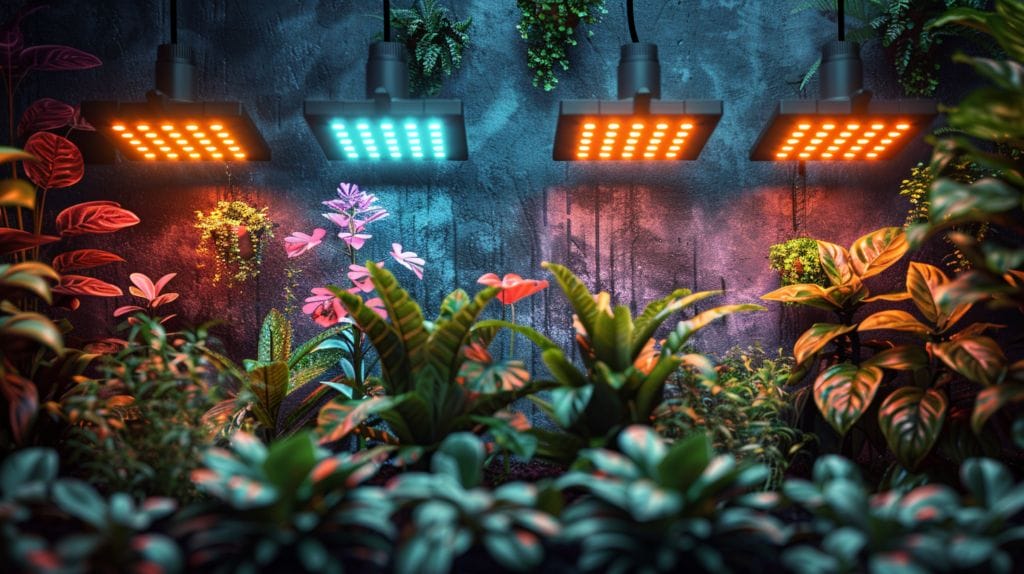
Achieving the right lighting setup is essential for promoting healthy growth. Regular monitoring of your plants is essential for ensuring they receive adequate light, particularly those away from your plants which may get little light.
Recognizing signs your plants may show if the light distance is off, such as yellowing leaves or stunted growth, can help you make adjustments promptly.
How Can I Use LED Smart Tech Lighting for Growing Plants?
LED smart tech lighting is perfect for growing plants indoors. It provides the right spectrum of light for optimal growth. If you encounter any issues, such as smart tech lighting tree troubleshooting, make sure to check the connections and settings to ensure your plants receive the best light for their growth.
Case Studies and Success Stories: LED Light Distance in Action
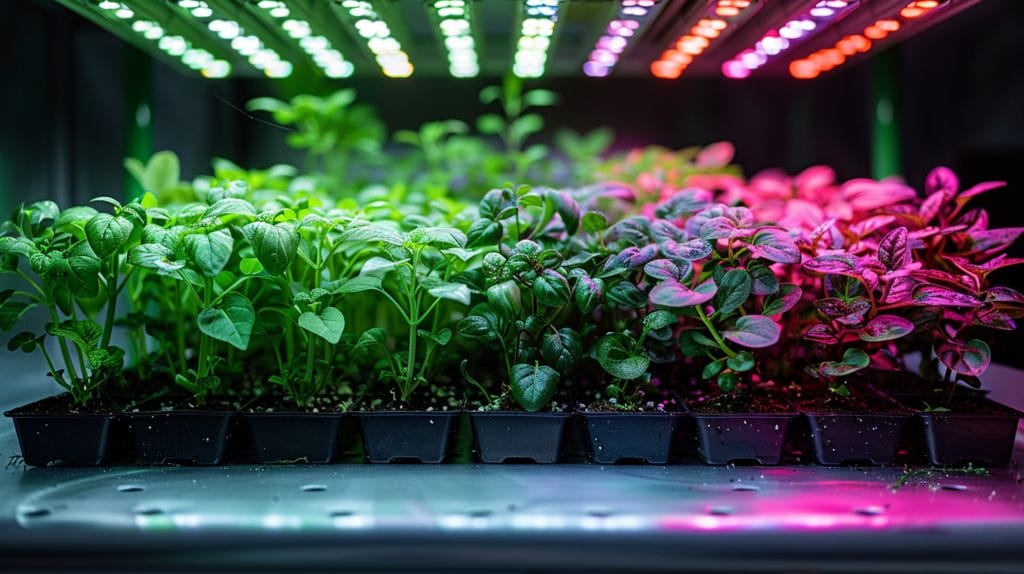
Adjusting the distance of LED grow lights has been a critical factor in the success stories of indoor gardeners. These examples underscore the importance of experimenting with LED light distances to meet the specific needs of different plant varieties, ultimately leading to successful indoor gardening endeavors.
| Case Study | Plant Type | Distance from Canopy |
|---|---|---|
| Urban Jungle Oasis | Succulents | 12 inches |
| Green Thumb Haven | Herbs | 8 inches |
| Blooming Paradise | Flowering Plants | 6 inches |
In conclusion, understanding the correct distance for your full spectrum LED (light-emitting diode) grow light is crucial for the health and growth of your indoor plants. By utilizing the information in the distance chart and following practical tips for adjustment, you can create a successful indoor gardening environment.
Conclusion
In conclusion, understanding the correct distance for your full spectrum LED grow light is crucial for the health and growth of your indoor plants. By utilizing the information in the distance chart and following practical tips for adjustment, you can ensure your plants receive the right amount of light for optimal growth.
With proper care and attention to LED light distance, you can create a successful indoor gardening environment.
Frequently Asked Questions
How far should LED grow lights be from plants?
The distance between LED grow lights and plants depends on the wattage of the lights and the stage of growth of the plants. As a general guideline, LEDs with higher wattage should be placed further away to prevent burning the plants, while lower wattage LEDs can be placed closer for better light penetration.
What is PPFD and why is it important for growing plants?
PPFD stands for Photosynthetic Photon Flux Density, which measures the amount of light that reaches a specific area for plant growth. It is crucial for determining how much light your plants are receiving to ensure they are getting enough light to thrive.
What should I do if the light is too far from my plants?
If the LED grow light is too far from your plants, you may need to adjust the hanging height to bring it closer. This will ensure that the plants receive enough light for optimal growth and prevent any stretching or weakening of the plants, closely monitoring the growealth.
How do LED grow lights benefit both plants and growers?
LED grow lights emit specific wavelengths of light that are ideal for plant growth, making them energy-efficient and providing enough light for plants to grow healthily in an indoor grow setting. For growers, LED lights emit less heat compared to traditional bulbs, making them safer and more cost-effective.
When is the best time to use LED grow lights during a plant’s life cycle?
LED grow lights are beneficial throughout the plant’s life cycle, from seedling to vegetative and flowering stages. By adjusting the light exposure and intensity based on the stage of growth, growers can achieve the best results and promote healthy plant development.

